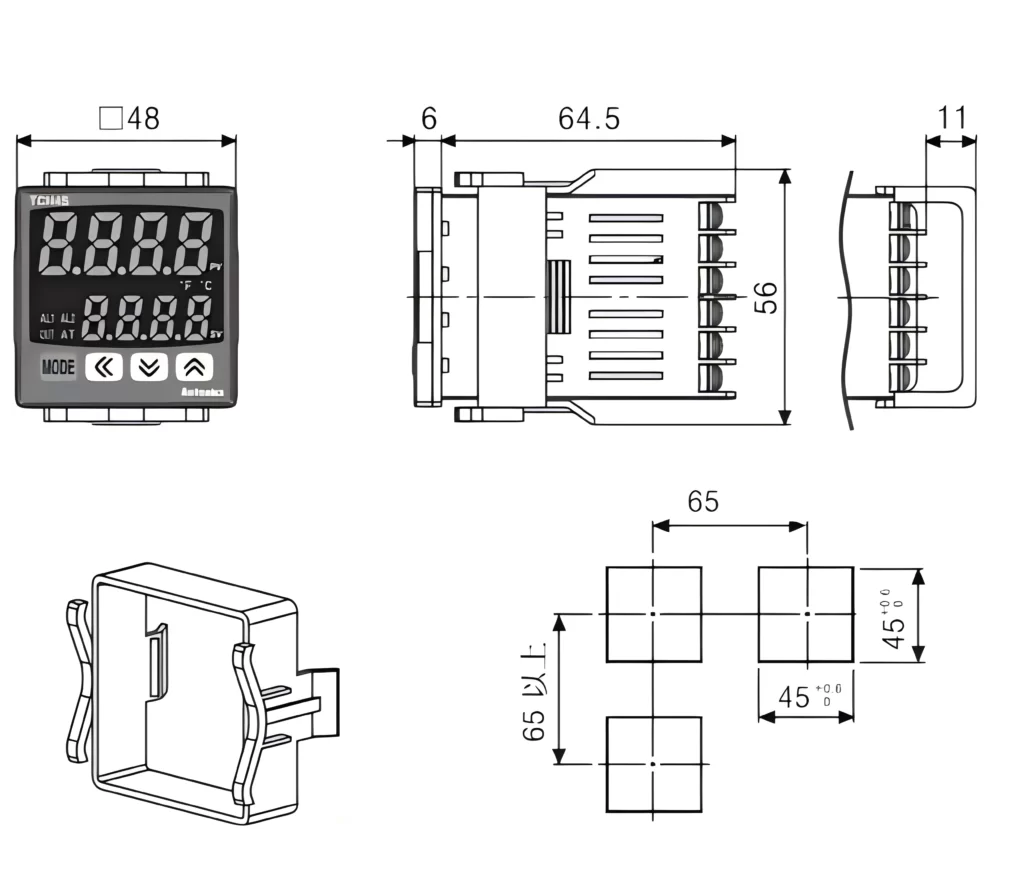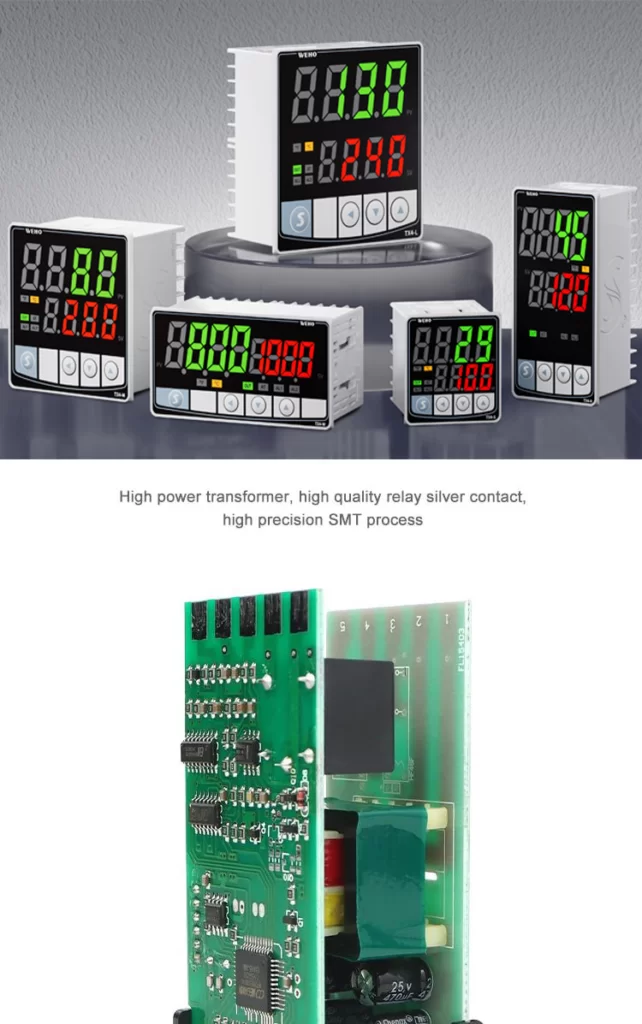A temperature controller is a device used to regulate temperature by comparing the actual temperature to a desired setpoint and then making adjustments to the system’s heating or cooling elements to maintain the desired temperature. They are essential components in a wide range of applications, from industrial processes and laboratory equipment to home appliances and HVAC Systems.
How Does a Temperature Controller Work?
A temperature controller operates in a closed-loop system, constantly monitoring and adjusting the temperature:
1.Temperature Sensing: A temperature sensor, such as a thermocouple, RTD (Resistance Temperature Detector), or thermistor, measures the current temperature of the system.
2.Feedback: The sensor sends this temperature measurement to the controller as an input signal.
3.Comparison: The controller compares the measured temperature to the desired setpoint (the target temperature).
4.Output Signal: Based on the difference between the measured temperature and the setpoint, the controller generates an output signal.
5.Control Action: This output signal activates or deactivates the heating or cooling elements connected to the system. This could be through a relay, a solid-state switch, or a variable output signal to adjust the power delivered to the heating/cooling element.
6.Loop Completion: The heating/cooling element adjusts the system’s temperature, which is then measured again by the sensor, creating a continuous feedback loop.

Types of Temperature Controllers:
Temperature controllers can be categorized based on several factors:
- On/Off Controllers: These are the simplest type, turning the heating/cooling element fully on or off depending on whether the temperature is below or above the setpoint. This can lead to some temperature fluctuation around the setpoint.
- Proportional (P) Controllers: These provide a more precise control by adjusting the output power proportionally to the temperature difference. Larger errors result in stronger heating/cooling action.
- Proportional-Integral (PI) Controllers: These combine proportional control with integral action, which considers the accumulated error over time. This helps eliminate steady-state errors and provides more stable control.
- Proportional-Integral-Derivative (PID) Controllers: These add derivative action, which considers the rate of temperature change. This allows the controller to anticipate future temperature changes and react more quickly, further improving stability and responsiveness.
Key Features of Temperature Controllers:
- Setpoint Adjustment: Allows the user to set the desired temperature.
- Display: Shows the current temperature, setpoint, and other relevant information.
- Output Type: Determines how the controller communicates with the heating/cooling element (e.g., relay, solid-state relay, analog output).
- Control Algorithm: Determines the type of control action (e.g., on/off, PID).
- Sensor Input: Specifies the type of temperature sensor compatible with the controller.
- Alarm Functions: Can trigger alarms if the temperature exceeds specified limits.
- Communication Interfaces: Some controllers offer communication capabilities (e.g., RS-485, Modbus) for remote monitoring and control.

Applications of Temperature Controllers:
Temperature controllers are ubiquitous in a vast range of applications:
- Industrial Automation: Controlling temperature in ovens, furnaces, reactors, and other industrial processes.
- HVAC Systems: Maintaining comfortable temperatures in buildings and homes.
- Plastics Processing:Controlling temperature in injection molding, extrusion, and other plastics manufacturing processes.
- Food Processing: Maintaining temperature during cooking, baking, and refrigeration.
- Laboratory Equipment: Regulating temperature in incubators, ovens, and other laboratory instruments.
- Medical Equipment: Controlling temperature in medical devices and equipment.
Temperature controllers are crucial for ensuring precise and reliable temperature management in countless applications. Choosing the right controller depends on the specific requirements of the system, including the desired accuracy, control algorithm, and features needed.

Conclusion
In conclusion, temperature controllers are indispensable tools for maintaining precise temperature control across a wide spectrum of applications. From industrial processes to everyday appliances, their ability to accurately monitor and regulate temperature ensures product quality, safety, and efficient operation. The variety of controller types, from simple on/off control to sophisticated PID algorithms, allows for tailored solutions to meet specific needs. As technology advances, we can expect further developments in temperature controller functionality, including enhanced communication capabilities, improved accuracy, and greater energy efficiency, solidifying their essential role in various industries and applications.If you Interested in Temperature Controller and have suggestions for my Blog.Please Contact me on https://wehopower.com/ or Whatsapp:+86 18991841394 Thank you for reading this blog.





